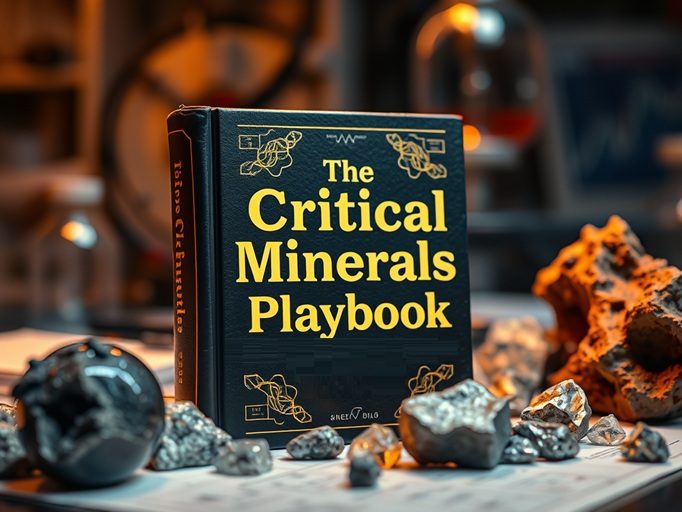TORONTO—It isn’t every year that a refractory metal with an unpronounceable chemical formula steals the thunder from gallium, cobalt, and rare earths. Yet that is exactly what happened at our Critical Minerals Institute (CMI) Summit IV this last month, where tungsten—element 74, W for “wolfram”—drew a standing-room-only crowd and more follow-up questions than any other commodity on the agenda.
The Price Signal No One Could Ignore
Part of the fascination is numerical. Chinese concentrate prices have jumped 26% since January to about $20,400 a tonne, a 12-year high, after Beijing tightened export licences in April.
The spike has rippled across derivative products—APT, powders, carbide—leaving tooling and aerospace buyers scrambling for forward cover. There is no futures market in tungsten, so physical premiums are the only hedge.
Those premiums have ballooned because China still accounts for roughly 80% of mine output (≈ 81,000 t last year), according to the U.S. Geological Survey. When Beijing couples tariffs on U.S. goods with paperwork delays for export permits—most recently on APT, oxide and carbide—prices elsewhere move fast.
Washington’s Tungsten Anxiety
Policy makers on this side of the Pacific are responding in kind. The U.S. Defense Logistics Agency’s FY-2025 shopping list includes up to 4.5 million lbs of tungsten metal and concentrates—a 50% jump over last year. Capitol Hill has also barred Pentagon contractors from buying Chinese or Russian tungsten from 2027 onward, while slapping a 25% tariff on Chinese material. The message is simple: “find a friendly source—or build one.”
Canada Steps Forward
Enter Christopher Ecclestone of Hallgarten & Company. In a post-summit interview, he quipped, “Tungsten is the new lithium,” then observed with his trademark irony, “Canada is where it’s at for many critical and strategic minerals.” The logic is difficult to refute: Canada combines rule-of-law geology with highway access to Midwestern machine shops—an irresistible advantage when Red Sea shipping lanes can no longer be assumed secure.
Five Stocks, Two Very Canadian
Investors who want tradable exposure now have a short, globally balanced bench. We highlighted five publicly listed companies, starting with the Top 3 in the market:
| Tier | Company | Jurisdiction | Current Status |
| Global Producer | CMOC Group Limited (Hong Kong: 03993 | Shanghai: 603993) | China | Delivered 8,288 t tungsten in 2024 from Sandaozhuang and Luanchuan, the largest public-company tonnage. |
| Integrated Processor | Xiamen Tungsten (Shanghai: 600549 | OTC: XIACF) | China | Owns the country’s flagship mine-to-carbide chain; its APT bids still set the tone for domestic prices. |
| Near-Term Producer | Almonty Industries Inc. (TSX: AII | ASX: AII | OTCQX: ALMTF) | Spain & South Korea | Commissioning the Sangdong revival for Q3-2025; long-term offtake with Plansee carries an unprecedented US $235/mtu floor. |
| Explorer—Canada | Happy Creek Minerals Ltd. (TSXV: HPY) | British Columbia | Fox project boasts one of the world’s highest grades (0.83 % WO₃ Indicated); a 10,000-metre drill campaign kicks off this summer. |
| Developer—U.S./Canada | American Tungsten Corp. (CSE: TUNG | OTCQB: DEMRF) | Idaho & B.C. | Began site prep at the historic IMA mine last week; early evidence of bipartisan appetite for domestic sourcing. |
Together, these five companies—the “Tungsten Five”—offer a miniature index that marries today’s cash flow with tomorrow’s torque. Two Chinese majors provide unavoidable exposure to the world’s dominant supplier, while three Western names align with the friend-shoring theme that charged the air at CMI Summit IV.
Macro Backdrop: Pricing in Risk
Unlike copper or nickel, tungsten trades off-exchange. Supply pinches therefore appear first in negotiated contracts, not on an LME screen. When Beijing folded tungsten compounds into the same licence regime as gallium in February, forward quotes jumped US$ 35/mtu overnight, traders told me in the corridor. With no futures market, industrial users must hold inventory or finance new mines to secure feed.
Floor-price clauses are fast becoming the hedge of choice. Almonty’s US$ 235/mtu floor under Sangdong concentrate gives investors downside protection while granting buyers unlimited upside—effectively a bilateral insurance policy that recognises geopolitical risk as a cost centre, not an externality. Expect more of these quasi-royalty hybrids as the Pentagon’s 2027 procurement deadline approaches.
China’s Counter-Moves
Sceptics say Beijing can crush prices by flooding spot cargoes, as it has in rare earths. Tungsten is harder to weaponise for two reasons:
- Processing chokepoint. Most APT capacity sits in a handful of Chinese provinces, and the new export-licence net now covers compounds as well as concentrates.
- Floor-price offtakes. Fixed-premium contracts insulate at least part of non-Chinese production from predatory pricing—hence Plansee and Global Tungsten & Powders’ take-or-pay deal for Sangdong’s entire Phase I output.
Dollars and Sense for Capital Markets
Tungsten still lacks the ETF inflows that propel lithium or uranium, but its risk-adjusted appeal is quietly improving. CMOC and Xiamen trade at single-digit EV/EBITDA multiples, tempered by a widening “China discount” every time Washington tightens sanctions. At the other end of the spectrum, Happy Creek and American Tungsten linger in micro-cap territory; one drill intercept or offtake could rerate them sharply in a market starved of pure plays.
Beyond the Hype
Tungsten will never dominate headlines the way lithium did during the EV boom, nor should it. Yet its unique blend of battlefield indispensability and industrial ubiquity makes it the perfect bellwether for an era of supply-chain decoupling. The real takeaway from Summit IV is that investors, policymakers and manufacturers have finally attached a price to geopolitical reliability— and are ready to pay it.
Disclaimer
The views expressed in this article are the personal opinions of the author. Tracy Hughes is not a licensed or registered investment advisor, broker-dealer, or securities professional. This material is provided for informational and educational purposes only and should not be construed as personalized investment advice or a solicitation to buy, sell, or hold any security. Readers should conduct their own independent research and due diligence, consult with a qualified financial advisor, and consider their individual objectives and risk tolerance before making any investment decisions.




Leave a Reply